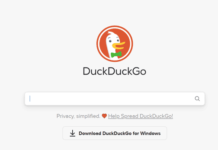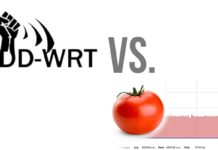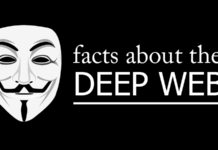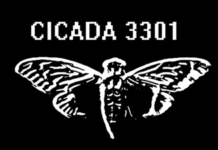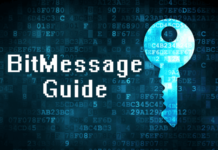If I had told you a few years ago that artificial intelligence (AI) would someday take your job, you would have laughed at me and called me crazy.
But here we are. Yet, as time goes on, such rumors start to look more and more plausible.
AI chatbots like ChatGPT have indeed been utilized for humorous conversation.
Still, there have been reports of people (even students) using such programs to plagiarise text from other, more respectable websites to accomplish homework assignments.
Best AI Content Detectors Tools for ChatGPT
If you were looking for a site where you might get reliable and Best AI Content detectors for ChatGPT and AI-generated content, you have come to the right place. Let’s look at the 12 Best AI Content Detectors at the top of their game.
Grammarly
Website: https://app.grammarly.com/
![]() Although the sole purpose for which Grammarly may be used may be to check for grammatical faults, it also functions as a quick Best AI Content Detector.
Although the sole purpose for which Grammarly may be used may be to check for grammatical faults, it also functions as a quick Best AI Content Detector.
This product uses a wide variety of artificial intelligence approaches, including machine learning, deep learning, and natural language processing, to name just a few. This helps improve the quality of copied text and Grammarly’s writing analysis.
Because Grammarly hides all of its wonderful capabilities behind a barrier, it cannot offer accurate information regarding the frequency with which its users plagiarise.
It is possible to review the program’s history to see if it has discovered any instances of plagiarism, but that is about all there is to it.
Nevertheless, if you want to upgrade to the Premium plan, you must pay an additional $12 monthly.
Despite this, I put Grammarly to the test by having it correct a few samples of writing, and it identified several problems, including the ones I mentioned above.
Writefull GPT Detector
Website: https://x.writefull.com/gpt-detector
![]() The GPT detector that Writefull developed is one of the new artificial intelligence technologies available on the web, and it has seen widespread adoption for this particular purpose.
The GPT detector that Writefull developed is one of the new artificial intelligence technologies available on the web, and it has seen widespread adoption for this particular purpose.
The GPT detector or Best AI Content Detector is a tool trained to recognize artificially generated texts by analyzing numerous datasets.
It may be used to find artificially generated texts quickly and easily. The tool generates findings instantly and can analyze data in real-time.
I used ChatGPT to have it generate a 500-word horror story and a news item for Beebom so that I could evaluate Writefull’s product as a way of content generation.
Our GPT detection application concluded that the former was made by computer programs, while the latter was created by individuals. A percentage scale indicates how likely the text was generated by an artificial intelligence chatbot.
For example, the scale may read: Support for GPT 4, currently in development, will be incorporated into the next upgrades to the currently available version of the GPT Detector.
Writefull does not charge users a subscription fee; nonetheless, the platform does impose an unannounced daily limit on users.
Yet, when it comes to software that checks for instances of plagiarism using artificial intelligence, the GPT detector is among the most effective.
GPTZero
Website: https://gptzero.me/
![]() The effectiveness of this AI Plagiarism checker has been attested to by a considerable number of web users, and it would appear that the tool is reliable.
The effectiveness of this AI Plagiarism checker has been attested to by a considerable number of web users, and it would appear that the tool is reliable.
If what you need is artificial intelligence that is capable of determining the subject matter of a variety of documents, then your quest may come to an end with GPTZero.
The service analyses the statistical data to determine whether or not the text was created by a human being.
The program performs several checks, one of which is to determine whether the content is current. Other checks include analyzing factors such as complexity and abruptness.
My time spent using GPTZero was positive, even though I had some issues here and there. The software has no issue distinguishing between content that was produced by humans and content that was written by artificial intelligence.
Although this did happen occasionally, most of the time, it properly classified information authored by humans as being produced by AI.
However, there were a few isolated cases where it got this wrong. Yet, it should be brought to everyone’s attention that this was a rare occurrence.
The fact that this artificial intelligence plagiarism checker disclosed its statistics pleasantly surprised me because other similar tools don’t do so. Also, no financial burden will be placed on you should you decide to use this instrument.
Writer AI Content Detector
Website: https://writer.com/ai-content-detector/
Writer AI is an online service that uses artificial intelligence for writing and detection, similar to several similar services.
The plagiarised text is readily available for retrieval by the AI plagiarism tool that the company has developed.
The user-friendly tool’s inventor intends to publish a companion app that will be compatible with the other products and services that the company provides.
The Writer AI can locate it because it is comparable to other content detectors. After copying some content from elsewhere or writing some fresh text, you can click the Analyze button.
However, remember that the maximum number of characters that can be inputted all at once is 1,500.
While reviewing large content sections, dividing the material into more manageable portions is necessary.
You must input the website URL with the information in question if you cannot manually track down the source material due to your lack of time. A percentage bar will indicate whether or not the tool has plagiarised the content you have entered.
When I tested the software with a limited collection of texts, it could discriminate between writings generated by humans and texts generated by machines accurately and consistently.
Writer AI is the place to go if you need to check for common examples of work plagiarised by artificial intelligence.
Plagibot
Website: https://plagibot.com/
Plagibot is an AI-driven plagiarism analyzer that is compatible with a wide range of file types. These formats include Microsoft Word documents, Portable Document Format (PDF) files, and many more.
Because it was designed with the customer in mind from the beginning, the artificial intelligence checker has a straightforward and simple user interface.
Plagibot continually crawls the internet to collect content for its database, which helps to guarantee that the information it contains is correct.
It is possible to rely on this text detection technology that is powered by artificial intelligence to uncover instances of plagiarism and identify information that has been duplicated, regardless of the format or source of the copied material.
While working with the website, I was unfortunately privy to several instances in which its dependability was compromised.
My good fortune is that it did not occur to me frequently enough to greatly impact how I generally use the language.
You should be aware that the services provided by Plagibot do come with a payment associated with them.
Free users are restricted to posting 2,000 words per month before they are prompted to subscribe to a paid plan.
If you are interested in upgrading to a premium tier, the organization can provide price details upon request if you want further information.
Copyscape
Website: https://www.copyscape.com/
Even if it differs slightly from the other AI plagiarism detectors on the market today, this one is still considered among its best.
This application is capable of automatically scanning entire web pages as opposed to simply the text that is provided by the user.
To be more specific, Copyscape will hunt for other instances of your website hosted on the internet and present connections to websites duplicating your work.
CopyScape markets itself to businesses as a tool that may be used to assess whether or not the company’s content has been copied and distributed without permission.
Although the program was developed with corporations in mind, it is accessible to anyone and can be used effectively.
It’s not difficult to get started using CopyScape at all. Simply paste the URL of the copied web page into CopyScape, and within a minute or two, you will get results comparable to those that Google provides but without the duplicated text.
If you find a result that piques your interest, you only have to click on it to obtain additional information.
The fraction, as well as the precise amount of words that have been copied, are both displayed by the service.
The recognition of AI-generated language is one of our strong suits, and this technology works effectively and accurately in most situations. Copyscape is now free to use.
However, this may change in the near or distant future. While you wait, you may try it by clicking on the link below and trying it out yourself.
GPTRadar
Website: https://gptradar.com/
This artificial intelligence plagiarism checker is directly derived from GPT-3 and has been given the fitting name GPTRadar.
The checker, driven by AI, can identify any type of text found on the internet and decide if it was authored by a human or a computer.
The webpage where you can use the tool is not particularly sophisticated, which may discourage some users.
Yet, it accomplishes what it set out to do and functions correctly. Not only did I paste in my own words, but I also pasted in some from Lorem Ipsum, and the results were, to put it mildly, pretty enlightening.
Based on the information provided by this tool, it appears that the “Lorem Ipsum” text was most likely generated by a highly developed Best AI Content Detectors system.
GPTRadar also reported the text’s complexity, which indicated the degree to which the model successfully predicted individual words.
Also, the software could determine which parts of the text were produced by humans and computers.
Also, it included a variety of statistics, such as token likelihood and distribution, which was a useful addition to the service and was very much appreciated.
Tokens are the currency used on GPTRadar, and free users start out with 2,000 tokens.
If you require additional tokens, you may buy them for as little as 0.2 cents each, which will get you 100.
Copyleaks AI Content Detector
Website: https://copyleaks.com/
Copyleaks asserts that its AI plagiarism and Best AI Content Detectors can distinguish between content generated by bots and content created by individuals with a degree of accuracy of 99.12 percent.
The application can be utilized in various languages, including French, Spanish, and German.
Copyleaks utilizes a tactic called “fight fire with fire,” which uses artificial intelligence to identify AI-generated language.
The company calls this method “fight fire with fire.”
This imparts capability to the tool and ensures it can compete successfully with the most cutting-edge AI chatbots when they become available. Copyleaks has stated that they will support the new version once ChatGPT 4 has been released.
This artificial intelligence-based plagiarism checker has various applications outside only academic papers, including articles, reviews, and blog entries.
I borrowed several paragraphs from a previous essay on Beebom about being addicted to using a smartphone so that reading would be more interesting.
The artificial intelligence text recognition program needed less than ten seconds to process around 600 words before it gave me the all-clear (human-written text).
I tried it out on a few different pieces of text, and it is capable of doing the functions that it advertises it can.
You don’t have to go to the website if you don’t want to; instead, you can install a useful Chrome extension on your computer. Copyleaks is an online tool that quickly analyses the content of your text and does not charge you a dime to use it.
OpenAI Text Classifier
Website: https://openai.com/
To get things started, the group of people working at OpenAI, who is also responsible for developing ChatGPT, have just produced an artificial intelligence tool that can identify instances of plagiarism.
The program, which has been given the name AI Text Classifier by the company, is an extremely improved version of the GPT model that the company has developed internally.
The classifier’s job is to evaluate whether or not a piece of input text was most likely created by a human or artificial intelligence. This can be done by analyzing the wording of the text.
Using data sets that include human and machine contributions, the plagiarism checker powered by artificial intelligence has been trained to detect plagiarism.
Because of this, the program has an easier time detecting plagiarism in content about AI.
This program, which can process a variety of text formats and is based on the company’s website, may be found here.
In addition, OpenAI has made it abundantly apparent that the tool is not infallible and should not be depended on as the only method of identifying copied text.
But I conducted some testing by copying my own Beebom piece and a few lines from Wikipedia.
It had no issue telling the difference between human and machine-written language. This is one of the most powerful artificial intelligence plagiarism checks you can use, but to use it, you need to input text that is at least 1,000 characters long.
Crossplag AI Content Detector
Website: https://crossplag.com/ai-content-detector/
The AI plagiarism detector used by Crossplag can process up to a thousand words at once and was developed expressly to identify instances of AI-written language in work submitted by students.
The Best AI Content Detectors was trained on an improved model of Roberta using the Open AI dataset, enabling it to perform very well when searching for instances of plagiarised material.
Even though it is still in its beta stage, the software has already demonstrated high efficiency in locating instances of plagiarism in written work.
Instead of providing it with information from just one source, I used a combination of human and machine-written content to achieve this goal.
I prioritized it so I could determine whether or not it could identify the human aspect. Even though it took far more time than anticipated, the instrument yielded satisfactory outcomes.
The AI that detects plagiarism believed there was only a 4% chance that this was written by an AI.
Crossplag plans to make its tool available to universities shortly, but not yet. For that to occur, the Best AI Content Detectors must process more than simply English.
Corrector App AI Content Detector
Website: https://corrector.app/ai-content-detector/
The artificial intelligence Best AI Content Detectors found within the Corrector app is compatible with all GPT models, which is more than can be stated for any of the other programs included in this list.
Even the most up-to-date GPT 4 model, which has just started appearing in stores, is supported.
An artificial intelligence text identification system uses contextual clues in the text inputs it receives to uncover additional similarities. Correctors, like other artificial intelligence plagiarism detectors, can be used by anyone for various purposes.
On the other hand, the findings can leave some individuals with a sense of perplexity.
The piece of software just has a meter that displays the percentage of fake data and does not provide any other metrics that may be used to describe the results.
You will receive a percentage of the return on the investment when you copy and paste the text. However, you will be restricted to entering 300 words into the space provided.
It is a fairly cool statement for The Corrector to say that their software is “The Sherlock Holmes of Best AI Content Detectors,” which is how they sell their product.
We would appreciate it if you could test Corrector and provide feedback on your experience using it.
Content at Scale
Website: https://contentatscale.ai/
Because it was trained on billions of pages of data, Content at Scale can make remarkably accurate predictions regarding the word selections most likely to be used.
It is one of the most advanced artificial intelligence plagiarism and Best AI Content Detectors now accessible because it uses a patented content generator that draws on several layers of AI components.
This enables it to scan across multiple artificial intelligence systems, including ChatGPT, for instances of plagiarism.
I inserted some of my responses from the ChatGPT and some of my own writing that I had copied and pasted to understand how this tool functioned.
The plagiarism checker powered by artificial intelligence carried out an exhaustive read-through and then provided a score incorporating both machine and human evaluation.
It did so in three ways: drawing attention to the text’s predictability, likelihood, and pattern.
Because I contributed some of the text used as input, I can attest that the application performs an excellent job of maintaining the sense that was intended by the author.
You won’t be charged anything to use Content at Scale, so there’s no reason not to check out this artificial intelligence tool that detects plagiarism.
FAQs (Frequently Asked Questions)
What is the best AI content detector?
AI content detectors are software programs that use machine learning algorithms to analyze text and identify plagiarism, grammar errors, and other writing issues.
With the increasing amount of content published online daily, writers must ensure their work is original and well-written. Therefore, finding the best AI content detector can be a game-changer.
One of the most popular AI content detectors is Grammarly. It offers real-time suggestions and corrections for spelling, grammar, punctuation, style, tone, and specificity.
It even has a plagiarism detector that compares your text with billions of web pages to check if any parts are similar or copied from other sources.
What are some benefits of using the best AI content detector?
Using the best AI content detector can benefit individuals and organizations. One of the most significant advantages is improved accuracy in identifying plagiarized content.
By utilizing advanced algorithms, these tools can detect even the slightest similarities between texts, making it easier to identify instances of plagiarism.
Another benefit of using the best AI content detector is enhanced efficiency. Unlike manual detection methods, which can be time-consuming and require a lot of resources, AI-powered tools can scan large volumes of text in minutes.
This makes them ideal for businesses that need to review multiple documents or articles regularly.
What are some of the different AI features of the Best AI Content Detectors?
One of the most impressive AI features of Best AI Content Detectors is their ability to analyze content for plagiarism.
With advanced algorithms, these detectors can scan through vast amounts of data and compare it against a wide range of sources to determine if there are any instances of duplication or plagiarism.
This feature is particularly useful for educators, publishers, and businesses that want to ensure the originality and quality of their content.
Another notable feature of Best AI Content Detectors is their language detection capabilities.
These detectors use machine learning algorithms to automatically identify the language used in a text. This feature saves time and helps users identify whether a piece of content has been written in the right language.
How do I use the best AI content detector?
The best AI content detectors are vital for any writer or content creator looking to produce high-quality, original work.
These powerful tools use advanced algorithms and machine learning techniques to analyze written content and identify instances of plagiarism, duplicate content, or other potential issues that could harm the quality of your writing.
To get the most out of your AI content detector, it’s important to choose a reliable and accurate platform that can handle all types of written material.
Look for a tool that offers multiple scanning options, such as text-based analysis or image recognition, to ensure that all media forms are covered. It’s also essential to find an AI detector with customizable settings so you can tailor the scanning process to your specific needs and preferences.
Conclusion
I’m keeping my fingers crossed that these tools will assist you in discovering any material regarding artificial intelligence that may have evaded your attention.
These AI text detection technologies will become needed in the coming months and will tremendously assist educators in the fight against plagiarism and ChatGPT.
On the other hand, if you are intrigued by the opportunities made available by artificial intelligence, you should investigate these fascinating applications of ChatGPT.
